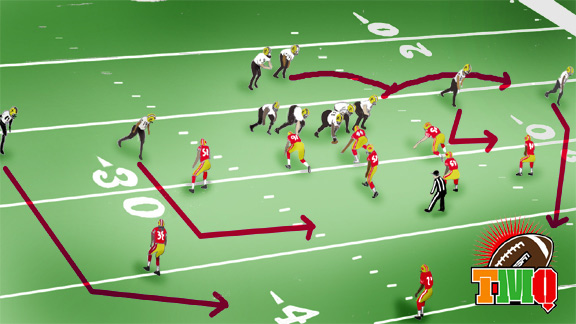
The spread offense has grown up
You will be assimilated by the offense. Resistance is futile.
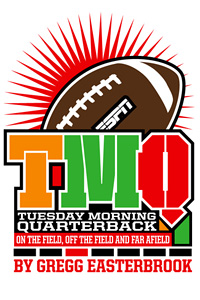
It's the year of offensive stat-a-rama throughout the NFL. There have been five 5,000-yard passing seasons in NFL history; three of them were this year. Drew Brees and Tom Brady both eclipsed the previous passing yards record in the same season. Records were set for passer rating, completion percentage and team yards from scrimmage. In the regular season, NFL teams averaged 235 gross passing yards per game, surpassing the previous high of 221 in 1995 and way above the 1971 average of 156 yards. Three of the top five rushing teams missed the playoffs while all the top five passing teams made the postseason. Detroit just gained a spectacular 882 yards passing in two games over six days -- and lost both because opponents gained 928 yards passing. The Packers and Patriots, with the league's lowest-rated defenses, just used scoreboard-spinning to win the conference top seeds. The league's No. 1 defense, the Pittsburgh Steelers, is already out of the playoffs, torched by Denver. In this year of offensive stat-a-rama, even a sputtering offense trumped the best defense!
Much of the same is happening in college football. In the Rose Bowl, Wisconsin gained 508 yards on offense, which a generation ago would have meant a walkover triumph. Wisconsin lost because Oregon gained 621 yards. The University of Houston averaged 599 yards of offense per outing. The University of Toledo played in back-to-back games in which both teams exceeded 60 points. Perhaps the Alamo Bowl represents the future of the sport. Washington gained 620 yards on offense, scored 56 points and lost, because Baylor gained 777 yards and scored 67 points.
What is going on? I journeyed alone to a distant mountaintop -- OK, a distant parking lot -- to ask the football gods. Their answer: The children of the shotgun spread have come home.
Dutch Meyer used four wide receivers in the 1940s, the trips formation has been seen for three decades, 20 years ago the no-tight-end "run and shoot" was an NFL meme, while the empty backfield has been around since Doug Flutie. These and other gonzo offensive tactics are not new developments. What is new is the near-ubiquitous proliferation of the shotgun spread and its cousin, the seven-on-seven league.
About a decade ago, multiple wide receivers with the quarterback in a shotgun began to catch on in high school and college. Using this look, in 2001, Clemson quarterback Woody Dantzler became the first player in NCAA annals to pass for 2,000 yards and rush for 1,000 yards in the same season. Shotgun spread offenses sprung up like dandelions, soon joined by the zone-read variation.

Around the same time, the seven-on-seven concept began to flourish. High school coaches looking for a way to evade contact-days restrictions, and make football a year-round sport, formed "passing leagues" -- essentially football without pads or linemen -- and began to play seven-on-seven all winter and spring. Seven-on-seven tournaments, unknown a generation ago, became common.
The children of the shotgun spread are advancing to the next levels. Players who spent their teen years in passing leagues -- and in seven-on-seven, everybody wants to play offense, nobody wants to be on defense -- have headed to college. A generation ago, college coaches put their best athletes on defense and tried to shut people down. In recent years, with a few exceptions such as LSU's cornerbacks, colleges have put their best athletes on offense. The boosters like shootouts. Players like to perform in shootouts, which lead to YouTube interest. "Basketball on grass" is the order of the day in college football.
And now the children of the shotgun and seven-on-seven are graduating to the pros. About five seasons ago, Indianapolis and New England went shotgun spread and rang up victory after victory. Now players arriving in the NFL don't consider the shotgun an innovation, they consider it standard tactics. Players who were raised on high school seven-on-seven have spent far more hours practicing passing than any other aspect of the game. It's what they are good at. This year Cam Newton and Tim Tebow brought the zone-read variation to the NFL. Most young offensive players are already familiar with it.

At the same time, defense has moved from discipline to personal flash as its highest attainment. Ours is a visual society, and Clay Matthews -- flowing long hair, showing his biceps in wild celebrations after a sack -- is at the moment the epitome of the defensive visual. Jack Lambert would get the tackle, Bruce Smith would get the sack, then they'd just walk back to the defensive huddle. How old-fashioned! What about your sack dance!
Today's defensive players are bored by topics like tackling fundamentals or stripping blockers so a teammate can make the play: They want to generate flashy "SportsCenter" visuals like Matthews does. If that means boatloads of offensive yards surrendered for every one flashy sack, so be it. The defender who misses what should have been a routine wrap-up tackle, because he's hurled himself into space hoping to become a highlight, is as much an image of this football season as the big passing day.
Sports fads go in cycles, and Alabama-LSU, a title matchup of low-scoring power-football philosophies, may signal that the pendulum has begun to swing back. But for the moment, the children of the shotgun spread are what's happening in football. Resistance is futile, as, apparently, is playing defense.

In other football news, just perhaps you heard about Tim Tebow's Broncos posting another implausible win. Now they travel to New England to face the sinister Patriots. Tebow should dress in a tunic, like Sir Galahad, whilst monks watch for signs of the devil incarnating around the New England bench.
Pittsburgh at Denver was the first game played under the new overtime rules intended to ensure each team at least one possession, and needless to say, the Steelers never touched the ball. For the second time in three seasons, a 12-4 visiting team lost to an 8-8 home team in the playoffs when the game went to overtime and the 12-4 visitor never got a chance at the ball. (San Diego 23, Indianapolis 17 in overtime in 2009 was the other case.)
A year ago, TMQ warned , "The new format does not guarantee each team a chance at the ball. If Team A receives the opening kickoff and scores a touchdown, the game simply ends." Back to the drawing board for overtime formats, please. How about alternating possessions beginning at the 50, and no kicking plays allowed?
If you're plunking down $5 in the office pool, there's a case for simply choosing the home team this weekend -- see below. Tuesday Morning Quarterback also looks to "authentic" wins: how a team performs versus others of quality. Here are the records of the teams still standing versus other teams that made the playoffs. Preseason, your columnist forecast a Super Bowl of New England versus New Orleans. But this metric suggests a final game of Baltimore versus Green Bay:
Baltimore, Green Bay: 6-0
New Orleans: 6-1
San Francisco: 4-1
Houston: 4-2
Denver, Jersey/A: 2-3
New England: 1-2
Have the Atlanta Falcons forever discredited going for it on fourth-and-1? TMQ's larger worry is that the Falcons have forever discredited the concept of playing all 60 minutes -- for the second consecutive year, this team quit in the third quarter of a playoff game. See more below.
Stats of the Wild-Card Round No. 1: After going a combined 0-6 to end the regular season, Denver and Houston both won their playoff openers.
Stats of the Wild-Card Round No. 2: In home games, New Orleans averaged 41 points and 507 yards gained.
Stats of the Wild-Card Round No. 3: Tony Gonzalez, No. 2 receiver in NFL history, is 0-5 in the postseason.
Stats of the Wild-Card Round No. 4: Cincinnati ended the season 9-0 versus teams that missed the playoffs and 0-8 versus teams that made the playoffs.
Stats of the Wild-Card Round No. 5: Under Mike Smith, the Falcons are 43-21 in the regular season and 0-3 in postseason. When Matt Ryan starts at quarterback, they are 26-4 at home and 17-16 on the road.
Stats of the Wild-Card Round No. 6: Road teams playing indoors in the postseason are on a 6-20 streak.
Stats of the Wild-Card Round No. 7: On his career versus Detroit, Drew Brees has 14 touchdown passes and one interception.
Stats of the Wild-Card Round No. 8: The city of Houston got its first NFL postseason win in 20 years.
Stats of the Wild-Card Round No. 9: In the past half century, Detroit is 1-10 in the postseason.
Stats of the Wild-Card Round No. 10: This weekend the Patriots host Denver, invoking the most puzzling statistic in sports: Tom Brady is on a 35-1 home streak in the regular season and a 0-2 home streak in the postseason.

Cheerleader of the Wild-Card Round: Elizabeth J. of the Cincinnati Bengals, who according to her team bio holds a bachelor's in chemical engineering and works as a chemical engineer. Here is a chemistry cheer:
Push 'em back, push 'em back,
waaaay back.
H2TiO3 is amphoteric and does react!
Sweet Play of the Wild-Card Round: Detroit leading 14-10, New Orleans had possession near midfield early in the third quarter. New Orleans came out in a power-I backfield with a fullback and tailback, with a wide receiver on each side and tight end Jimmy Graham in-line on the right, in the standard position for a tight end. Detroit came out in a 4-3 front with two corners and two deep safeties. Both teams were lined up like a conventional offense and defense of a generation ago.
Drew Brees saw something, and quickly audibled. The Lions' defense should have sensed the roof was about to fall in. What did Brees see?
Brees saw that all three linebackers were "in the box," tight within the imaginary line of the New Orleans tackles, in order to stop an expected rush. Brees audibled to have Devery Henderson, the right receiver, come in motion back toward the formation and stop inside Graham, who would run a quick out. Brees had realized with the Detroit linebackers squeezed in tight, no linebacker would be able to cover Graham on a quick out, and with the strong safety deep, the corner on the right would have to get Graham, which is what happened. Henderson could go straight down the field on a deep post without any cornerback near him, having only the strong safety to beat. Henderson had to evade a Detroit defensive end -- wide receivers don't normally start up the field from so tight inside -- then it was smooth sailing to the end zone and an insurmountable lead for the home team. The action of the play isolated a speed receiver on a strong safety, and that's a matchup the receiver is likely to win.
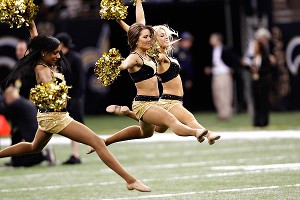
This sweet snap brings together what has made New Orleans of 2011 the top yardage-gaining team ever. First, a clever play design to exploit a standard situation -- I-backfield, Cover 2 -- with the twist of a wide receiver going deep from inside the offensive tackle. Second, good blocking to create time for the action to happen. Third, a star quarterback at the peak of his career who recognized a defensive weakness, called the correct check and made an accurate throw.
Sour Play of the Wild-Card Round: Houston leading 24-10, Cincinnati faced fourth-and-3 at midfield at the start of the fourth quarter. The Texans rushed four; Cincinnati had five to block four. Yet the play resulted in three of the four Houston rushers converging on rookie quarterback Andy Dalton as some Cincinnati linemen stood there watching. Cincinnati left tackle Andrew Whitworth brushed his man, then simply turned around and watched his man chase down Dalton and hammer him as he threw an interception.
The only thing that did not go Houston's way on this decisive snap was that Texans corner Jonathan Joseph should have knocked the pass down, which would have given Houston possession at midfield, rather than catch the ball, giving Houston possession on its 24. Fourth down, knock it down! Even if Houston coaches were shouting this, every defensive back knows interception stats are essential to future contract offers.
Sweet 'N' Sour Play of the Wild-Card Round: Denver takes possession on its 20 for the first snap of an all-new postseason overtime format that supposedly ensures no team will face defeat without a chance to touch the ball. Denver scores to win, which is sweet; the overtime format fails on its very first try, which sour. Tim Tebow -- he can't win in the NFL, he can't complete passes -- fakes the zone-read option and then throws an 80-yard touchdown pass, which is sweet. Deeply sour was the Pittsburgh defense on this down. Expecting run, at the snap the Steelers had nine men on the line of scrimmage and both safeties "down," a mere five yards off the spot of the ball.
Demaryius Thomas ran a simple in route, then was able to leg it to the end zone because there was no one back for Pittsburgh. Ike Taylor, a cornerback, was the sole Pittsburgh player with any depth, and he got outrun. The league's No. 1-rated defense lines up so totally wrong that it surrenders an 80-yard touchdown on the first snap of overtime.
The absence of safety Ryan Clark was a factor on this play -- his backup, Ryan Mundy, was charging toward the line at the snap, guessing run. Mike Tomlin was right not to dress Clark, who has sickle-cell trait, which makes exertion dangerous for him in high altitude. But Mundy didn't charge the line of scrimmage because the mood struck him. He was coached to do this when the Steelers read rush, and did so several times on first down in regulation. But that meant Pittsburgh was in the rare Cover Zero -- no one guarding the deep center of the field. That was a rare sour call by Dick LeBeau, the Steelers' defensive coordinator.
Something else happened on this play beyond a bad call by a Hall of Fame coach. An entire season of Tebow hype, psychoanalyzing and prayer circles built up to a down on which the Steelers defense assumed there was no way -- just no way -- Tebow could win a game with his arm. No way!

Unified Field Theory of Creep: Reader Amy Landon of Louisville, Ky., reports, "I went to the local Target on December 30, a mere eight days after the official start of winter this year, and the first thing displayed inside the entrance was women's swimsuits."
Atlanta at Jersey/A Analysis: On the surface this game seemed to be about fourth-and-1. Atlanta failed twice on fourth-and-1, Jersey/A succeeded once on fourth-and-1, and the Giants won. Spoiler alert: Obviously, I am going to say the game was really about something else. But let's take short yardage first.
Game scoreless, Atlanta faced fourth-and-1 on the Jersey/A 24 in the first quarter. Going for it here makes eminent sense: As Jimmy Johnson (the coach, not Jimmie the driver) once said, if you can't gain one single yard then you don't deserve to win. Tuesday Morning Quarterback maintains that the essence of the short-yardage play is misdirection. Boy, did Atlanta offer misdirection. First the Falcons shifted to an unbalanced line; then a back shifted; then a player simulated man-in-motion; then another back shifted; then Matt Ryan barked a hard count; then a man went in motion. TMQ has no idea why this play did not draw an illegal procedure penalty. TMQ preaches, Do a Little Dance If You Want to Gain That Yard. The Falcons did the Blue Danube Waltz.
At the conclusion of the waltz, Ryan tried a sneak and was stuffed. Atlanta got a safety a couple of snaps later. Any coach would rather have two points and the ball than three points and kick away. So the first fourth-and-1 was not the problem.
Now it's the third quarter, Jersey/A leads 10-2 and Atlanta faces fourth-and-1 on the Giants 21. This time Ryan just sneaks, no theatrics, and again is stuffed. Combined with Atlanta's failed fourth-and-1 in overtime versus New Orleans, the Falcons seem to have become Exhibit A for sending in the kicking unit. Yet the tactics were correct; it was the play designs that were bad.
PASSING FANCY
Regular-season passing yards per team per game, by decade:
| Decade | YPG |
|---|---|
| 2011 | 235 |
| 2001 | 206 |
| 1991 | 199 |
| 1981 | 205 |
| 1971 | 156 |
| 1995* | 221 |
| *Single season, pre-2011 peak | |
Passing yards per team, 2011
| Team | YPG |
|---|---|
| 1. New Orleans | 344.1 |
| 2. New England | 328.6 |
| 3. Green Bay | 322.6 |
| 4. Detroit | 316.9 |
| 5. NY Giants | 308.3 |
| 6. San Diego | 289.0 |
| 7. Dallas | 278.3 |
| 8. Atlanta | 272.8 |
| 9. Pittsburgh | 270.8 |
| 10. Philadelphia | 267.3 |
Here, Bill Pennington reports that Jersey/A coaches broke down tape of Atlanta fourth-and-1 attempts and found that Ryan simply sneaking was the usual outcome; Giants defenders were coached to ignore everything except Ryan, which they did. On the second fourth-and-1 try, Jersey/A lined up with eight defenders inside the Atlanta tackles, five of them in the submarine stance. No five-man offensive line can push eight defenders backward. Yet Ryan just plowed ahead. Why didn't he audible to a pass? With eight defenders in the box and Atlanta having three men split wide, the home run pass should have been open -- a touchdown for Atlanta here would have changed the game. But Ryan just plowed ahead, doing exactly what the Giants expected.
Arguably, Atlanta did not go for it enough! On the possession after the first fourth-and-1 failure, the Falcons punted on fourth-and-1 from the Jersey/A 42. Sure the last fourth-and-1 failed, but just because a coin came up heads on the last 10 flips tells nothing about what will happen on the next flip. Punting on fourth-and-1 in opposition territory is a punk move. It took the Giants just four snaps to pass the point where the ball would have been, had the Falcons gone for it and missed; Jersey/A scored a touchdown on this possession. Then, trailing 24-2 in the fourth quarter, Atlanta punted on fourth-and-10. Punk, punk, punk. It's a playoff game, why are you punting? That move came after Atlanta also punted on fourth-and-2 when trailing 17-2.
A punt on fourth-and-short when trailing big in the second half of a postseason contest meant Mike Smith and the rest of the Falcons coaching staff had quit on the game -- exactly as they quit on the game in the third quarter of last season's playoff collapse.
Seeing their coaches quit, Falcons players quit. In the third quarter, Jersey/A faced third-and-7. Megabucks corner Dunta Robinson, one of the highest-paid defenders in the NFL -- paid much more than Atlanta corner Brent Grimes, a better player -- simply ignored Hakeem Nicks, letting Nicks run past as Robinson covered no one. When Nicks caught the ball and started upfield, Robinson only jogged in his general direction, not starting to sprint until Nicks had broken into the clear. (Later Robinson would be way out of position, showing no effort, on the icing Mario Manningham touchdown catch.) As Nicks went the final 20 yards, only defensive end Kory Biermann was chasing him -- Atlanta's speed players were just standing around watching. It's one thing to lose, quite another to quit. For the second consecutive season, Atlanta quit on a playoff game.
Now the real story of the contest; Jersey/A defense. Not only did the G-Persons shut out Atlanta's offense, they did it with a conventional four-man-rush Cover 2. In a year of gimmick defenses -- two linemen, zone rushes, safety blitzes -- the Giants just sent their front four, had their corners in press position and their outside linebackers dropping wide, the traditional Tampa Two version of the Cover 2. Occasionally the Giants showed their TCU-inspired 4-2-2-3 look with three safeties, but blitzed only twice. Jersey/A's defensive tactics were Football 101. And this season, traditional defense seemed to take Atlanta by surprise.
On offense the Giants went traditional, too, rediscovering the power run -- they finished the regular season last in rushing -- for 172 rushing yards. Twice Jersey/A got big runs using double-pulling guards, the Lombardi sweep action of the 1960s. When Atlanta became nervous and started big-blitzing, Jersey/A threw down the field. On both sides of the ball, the Giants looked like they looked late in 2007, when they made an unexpected Super Bowl push.
Can they do so again? Kansas City showed that the formula for beating Green Bay is to frustrate Aaron Rodgers' receivers with bump-and-run and then, once holding even a slight lead, control the clock with power rushing against the Packers' (relatively) lightweight front seven, which is built to stop the pass after Green Bay jumps ahead. No one wants to play the 15-1 Packers at Lambeau Field. But remember what happened the last time Jersey/A went to Lambeau in the postseason.
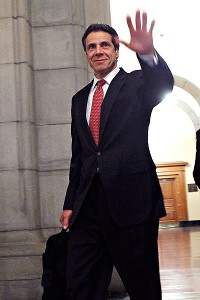
Wasteful Spending on Bodyguards Watch: This column pounds the table about public officials surrounding themselves with taxpayer-funded guards to seem more important. Equally bad are football teams with police escorts. Last week the LSU football team had 18 police cars and officers on motorcycles escorting it from Baton Rouge to New Orleans for the BCS title game, blocking sections of a major highway as the buses passed. Why does being a football team exempt you from traffic, and at public expense?
Reader Luke Hudak of Lake Placid, N.Y., offers a refreshing counterexample: "This article describes New York Gov. Andrew Cuomo visiting the Adirondacks without personal security or entourage. I ran into him while jogging in town. He said hello and took a second to pet my dog. It was nothing spectacular, just a public figure acting like a regular person, rather than wasting taxpayer funds everywhere he goes." The previous governor, David Paterson, assigned himself an incredible 200 security officers so that he could move in a vast motorcade, pretending to be president of the United States.
"When the Radical Priest Came to Get Me Released/We Were All on the Cover of 'Newsweek'": The Falcons have already spent much of their 2012 draft position to obtain Julio Jones. The Raiders have already spent much of their 2012 draft position to obtain Carson Palmer and Terrelle Pryor. Atlanta and Oakland, the teams that in 2011 mortgaged 2012 draft picks to win now, did not win now.
Washington Continues to Give Away Your Children's Future: Last week the Obama Administration said it wants the national debt ceiling raised from $15 trillion to $16.2 trillion; the debt ceiling was $14.1 trillion just last summer. Recent experience teaches that whenever the debt ceiling is raised, Congress immediately spends every penny, then demands another increase.
If this debt-ceiling raise occurs, that will mean that after last summer's lengthy, theatrical "deficit showdown" that ended with Democrats and Republicans making an extremely vague promise to cut the national debt by $1.2 trillion but not beginning 'til 2013, Washington will have immediately borrowed and spent another $2.1 trillion -- almost twice as much borrowed and spent right now as the amount promised for unspecified savings years down the road. Meanwhile, Washington has broken the Social Security firewall for the first time, with $130 billion borrowed to fund the 14-month (and counting) payroll tax holiday. Until 2010, all Social Security payouts were fully funded in the current year. Now Social Security is on the dole. But sometime in the future, Washington promises to become disciplined!
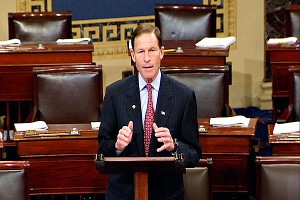
In the year 2000, U.S. public debt -- the serious kind, owed to other nations rather than from one aspect of government to another -- was 37 percent of GDP. Now public debt is 65 percent of GDP. Under current law, the George W. Bush tax cuts expire in 2013, and public debt as a fraction of GDP will begin to decline. Letting the Bush tax cuts expire is the responsible course -- remember, President Bush presented them to the nation as a temporary measure. If Congress extends the Bush tax cuts, handing the middle-aged yet another special favor while heaping more debt on the young, public debt will hit a ruinous 100 percent of GDP in roughly a decade.
That's not all. Federal unfunded liabilities, mainly for pensions and health care, rose by about $4 trillion in 2011 -- treble the best-case savings to be realized from the long-term cuts Congress won't specify. Details are in this federal report, released a few hours before Christmas Eve, in hopes no one would notice.
Promises of future benefits can be altered: Bear in mind, courts have held there is no right to Social Security payments or Medicare coverage, either of which Congress may reduce or terminate at whim. But if Congress attempts to pay out what it's promised to future Social Security pensioners, government and military retirees, and also to fund ever-more-generous promises about medical care, today's national debt will look like chump change. Does even one current member of Congress care? By giving away the store, they bask in perks and campaign contributions, and will have departed before the crash hits.
Detroit at New Orleans Analysis: The game began auspiciously for the Lions, with Detroit taking a 7-0 lead on a surprise pass to third-string tight end Will Heller. At intermission, Detroit led 14-10. Here are the second-half New Orleans possession results: touchdown, touchdown, touchdown, touchdown, touchdown, victory formation.
The Lions stymied Drew Brees early by playing a backed-off secondary that took away the deep pass. But a backed-off look is attractive to run against. Sean Payton began calling rushing plays -- the hosts would end up with a 135-yard rushing edge. When the 1991 Bills were the first NFL team to go no-huddle all season, they lead the league in rushing -- running plays are effective against nickel and dime defenses that take out brawny linebackers and insert skinny cornerbacks. The Saints, who have used the same insight to feature the rush, and have not been one-dimensional, finished the regular season sixth rushing. Then in the third quarter when Detroit brought its defense up to stop the run, Brees began to fling the ball around the field.
Obviously, when you surrender 626 offensive yards you haven't played good defense, which the Lions did not. The Packers and Patriots don't play good defense either, but do make defensive plays -- 31 interceptions by Green Bay, for instance. Twice against New Orleans, Detroit defenders failed to make plays, with Eric Wright and Alphonso Smith dropping potential interceptions that hit them square on the hands. If they make the picks, the game is close rather than a runaway. Smith, especially, seemed lost -- dropping a pick, letting Robert Meacham run past him unopposed for a touchdown (see below) and being roasted by Marques Colston for a long catch.
At least the Lions broke their postseason drought. But their quarterback threw for a near-record total, Calvin Johnson was unstoppable -- 10 touchdown on plays that began in the red zone -- yet they ended the season blown off the field. The Saints ran 81 snaps to 53 for Detroit, and New Orleans is not a quick-snap team -- Brees usually huddles. The Detroit defense just couldn't stop anything. New Orleans never punted!
As for the Saints, their offense continues to be near perfect. In blocking, receiving, rushing, quarterbacking, play design, the Saints have the package. We'll see how this team fares at Green Bay, away from their dome noise and house-party atmospherics. New Orleans is 9-0 at home and so far is 5-3 on the road.
If the Falcons lost on fourth-and-1, the Saints won on fourth-and-1.

Twice New Orleans faced fourth-and-1 and converted. New Orleans also went on fourth-and-2 and converted. Lots of teams get into position to make plays. Winners finish, which New Orleans did.
One Saints fourth-and-1 involved left guard Carl Nicks trap blocking right. The fourth-and-2 involved tackle Jermon Bushrod pulling on a toss left; in this power-rush situation, 5-foot-6 Darren Sproles was successful as the ball carrier. On the other New Orleans fourth-and-1, Drew Brees leapt over the pile. TMQ has asked more than once why, if the leap for 1 yard works at the goal line, teams don't use the leap elsewhere on the field. New Orleans used the leap on fourth-and-1 from its own 38. Winners finish.
Tuesday Morning Quarterback continues to feel unease about the New Orleans defense which, under the tastefully named Gregg Williams, blitzes way too much for your columnist's liking. Saints leading 24-14 late in the third quarter, Williams called an insane eight-man blitz, pretty much the same as handing out a card that says, "Please score a touchdown." Matt Stafford threw a 42-yard completion to Calvin Johnson, and a moment later the count was 24-21.
A Saints big blitz did result in an interception, and a blitz does not need to produce sacks -- New Orleans' sack numbers are middling -- to be effective. Several third-down, six-man blitzes by the Saints caused Stafford to throw the ball away, resulting in incompletions. But too much big-blitzing is playing with fire, and you know the saying about what happens to those who play with fire.
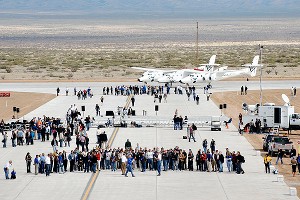
$200,000 Plus $50,000 Change Fee If You Launch Earlier: Yours truly expressed skepticism four years ago that private space tourism would happen more than once in a blue moon. Boeing's new 787 jetliner, which does not break the sound barrier or high altitude, cost $15 billion to develop; even the relatively simple rocket-powered small vehicles needed for space tourism should cost billions to develop. Yet all space tourism companies claim they can develop suborbital spacecraft for $100 million or less. As my 2008 item noted, "I ain't getting on no space-bound machine that did not cost billions of dollars to develop and test."
But space tourism sounds like a nifty story, so the mainstream media continue to exhibit no skepticism. Last week The New York Times took at face value Richard Branson's declaration that his Virgin Galactic "intends" to commence regular space tourism in 2012. The article did not mention that the company's spaceplane has had only 17 test flights, the most recent lasting seven minutes, owing to a serious malfunction: "Upon release, the spaceship experienced a downward pitch rate that caused a stall of the tails." The test crew did some great flying to get back on the ground. A lightly tested system that just experienced a failure like this is a long way from commercial operation.
The Times also gave full credence to the claim of a company called XCOR to be readying a tourism spacecraft. Branson's company wants $200,000 per seat for a ride, XCOR is selling bookings at $95,000 a seat. A discount airline into space!

The Times further gave naive credence to marketing claims by Space Adventures, which is taking deposits on space flights but hasn't even gotten to the flight-test stage. Space Adventures has a "preferred suborbital spaceflight partner" that boasts that it just launched a sounding rocket. Sounding rockets are a class of mini-rockets developed in the 1950s. For a company to boast, in 2011, of launching a sounding rocket is like Boeing calling a press conference to announce it has developed an open-cockpit biplane. Space Adventures says it will charge $110,000 per seat for an automated two-passenger flight -- passengers only, no pilot. Surely you'll be able to relax and enjoy the view even though the company's own personnel won't get on board!
Maybe space tourism will happen someday. For now, the companies taking hefty deposits may be bilking customers -- and perhaps venture capitalists, who may be putting up capital with unrealistic expectations of returns. Yet major news organizations display no skepticism about space-tourism sales pitches. Even if their writers don't understand engineering, how hard is it to ask how many test flights have occurred?
Hilarious detail from The Times story: "For Virgin's customers, the ride to space will culminate a three-day trip to the newly built Spaceport America in Las Cruces, N.M. Part of the time will be spent on training and preparations. Part of it will be fun on the ground. 'Typical Virgin, there'll be parties going on,' [a travel agent] said." Oh, so you'll be hungover when you experience five times the force of gravity during acceleration, followed by weightlessness. Doesn't that sound like fun!

TMQ Readers Know Too Much: I opined that fingerless gloves are worn only by Bob Cratchit and tough guys in Steven Spielberg productions. Joshua Thompson of Melbourne, Fla., reports, "Fingerless gloves have been rebranded as texting mittens."
I wrote that the Broncos had made sure the bio in which Mike Shanahan christened himself The Ultimate Leader disappeared from the team's archives. Readers including Brian Hicks of Bastrop, Texas, did a little digging and pulled it up.
Punter Sav Rocca, undrafted and waived, made my All-Unwanted All-Pros. I noted he had played Aussie-rules football for the Collingwood Magpies. Stuart Capel of Melbourne, Australia, adds, "After Rocca led Collingwood in goalkicking for seven years, the club released him. So not only was he not wanted in the NFL, he was unwanted in another sport."
Last month I lauded Ndamukong Suh for being the top-ranked athlete on this inventory of donations made by celebrities. Enid Roche of Redmond, Wash., retorts, "Most of his donation was to the athletics department of the University of Nebraska, which is not a charity. Big-college athletics departments are more like business ventures. He may get something named after himself, and praise and access, in return. Is that a true gift?"
Sarah Ellison of Brooklyn, N.Y., writes, "On that list, many donations were to self-named foundations. In addition to being ego vehicles, the self-named foundation can be used for something akin to money laundering, to make your living expenses and payments to relatives tax deductible." Nineteen of the 30 celebrity donors on the list gave to foundations they named after themselves, among them George Lucas, giving $4.3 million to the Lucas Film Foundation, and romance novelist Nora Roberts, giving $3 million to the Nora Roberts Foundation. Model Giselle Bundchen's giving $1.5 million to the Red Cross is a true gift; Jerry Seinfeld's giving $1.8 million to the Seinfeld Family Foundation sounds more like a tax dodge than philanthropy.
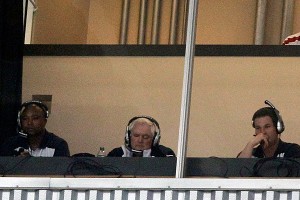
Cincinnati at Houston Analysis: Even adjusting for their crowd-noise advantage, the Texans seemed far more pumped for this game than the Bengals. Cincinnati coach Marvin Lewis has never won a postseason game as a head coach, and displayed no emotion on the sideline. Lewis is 0-3 in the postseason, with his teams outscored 86-41.
Many Bengals showed little effort, the offensive line being totally outperformed by Houston's front seven. Corner Adam Jones was toast-with-jam as he stood and watched Andre Johnson blow past him for an uncovered touchdown; safety Chris Crocker couldn't be bothered so much as pushing Arian Foster out of bounds on what became the icing touchdown. Overall, a crummy effort by Cincinnati. Though bear in mind, the Bengals are holding a sack of booty from Oakland in terms of extra draft choices from the Carson Palmer trade.
The Texans played well and showed spirit. If you haven't seen the one-man touchdown by Texans defensive end J.J. Watt, watch the highlights here.
Houston's zone blocking produces big plays when the entire flow goes in one direction and Foster cuts back the other way. Saturday, three times he cut back to the weak side (no tight end) and Cincinnati had no contain. The Moo Cows lost three in a row with backup defensive coordinator Reggie Herring calling plays. Starting defensive coordinator Wade Phillips returned to action, and the defense performed better. Philips called a few "overload" blitzes, including one that produced a key third-quarter sack. With the Cincinnati offensive line looking confused and sluggish, the overload blitz was the right tactic.

Disclaimer of the Wild-Card Round: Campbell's Select Harvest soup boasts of "real ingredients." So "real ingredients" differs from "ingredients" -- how, exactly?
Adventures in Officiating: "The ball will be spotted at the 6-and-¼-yard line," referee Tony Corrente announced during Lions at Saints. A quarter of a yard is nine inches. Did he use a tape measure?
Lions faithful can stew about the inadvertent whistle on a Saints fumble that allowed New Orleans to recover, but stopped play before what was likely to be a long runback. And why didn't Jim Schwartz challenge a very favorable spot that helped sustain a New Orleans drive on third-and-11? The Saints ended up with a touchdown on the possession.
Pittsburgh fumbled a backward pass; an inadvertent whistle sounded before Denver recovered. Zebras decided the ruling on the field, of incompletion, could not be altered. At New Orleans, the ruling on the field had been fumble, then the inadvertent whistle stopped a runback. The inadvertent whistle rule has been tweaked several times in recent years; right now it allows a defensive recovery only when the question is whether the quarterback fumbled or threw an incompletion, not whether the pass was forward or backward. This rule still isn't satisfactory.
Two referees over the weekend referred to hits to "the head and neck area." What's the difference between the neck and the "neck area?"

Wacky Food of the Wild-Card Round: The Center for Science in the Public Interest reports that Cheesecake Factory's red velvet cheesecake has 1,540 calories and 59 grams of fat -- about the same as an entire half-gallon tub of ice cream. Order this and you shouldn't eat anything else that day but raw vegetables and green tea.
Pittsburgh at Denver Analysis: One-thousand one, one-thousand two, one-thousand three, one-thousand four, one-thousand five, one-thousand six, one-thousand seven -- that was the count before Tim Tebow released a 51-yard pass to Demaryius Thomas, setting up the Broncos' first touchdown. Tebow wasn't scrambling, rather, standing tall, unmolested. The Broncos' offensive linemen is the overlooked story of Denver's improbable run. Owing to good blocking, the Broncos led the league in rushing. Good pass blocking allowed Tebow to carve up the Steelers' No. 1-ranked pass defense. Zane Beadles, noted in this column last week as a Pro Bowl snub, had a tremendous game, including pulling and knocking down two men on Tebow's touchdown run -- Beadles got the defender at the point of attack, then went to the second level and got somebody else. Let's hear some love this week for the Broncos' offensive line.
That run was a sweet play. Leading 7-6, Denver lined up on the Pittsburgh 8 in the little-used "quirk" formation -- four wide receivers on the same side of the field. (A quad formation is possible, but one of the players would have to be an ineligible lineman.) Four men right drew many Pittsburgh defenders to that side, plus at the snap, strong safety Troy Polamalu, who in what Pittsburgh calls Cover 6 takes the short side of the field, was moving to the quirk side, too. Then Tebow ran off-tackle behind Beadles pulling. At the snap, in the center of the field there were four defenders versus five blockers, a matchup the runner will win.
Pittsburgh played with numerous injuries, but also appeared overconfident. After giving up just two passes of 40 or more yards in the regular season, the Steelers allowed passes of 80, 58, 51 and 40 yards by sputtering Denver. Tebow's passer rating against Pittsburgh (125.6) exceeded the league record posted by Aaron Rodgers (122.5). Once again James Harrison played dumb, drawing a roughing the passer flag that helped position Denver for a field goal. Perhaps in the offseason, Harrison can, as was said in the 1960s, get his head examined.
What should the Broncos be on the lookout for at New England?
Twice, linebacker D.J. Williams ended up covering Pittsburgh speed receiver Mike Wallace deep. Both plays ended as incompletions, but either could have been a dagger. New England will analyze how Williams ended up on a speed receiver deep and try to duplicate the action. Denver coaches, don't let this happen again. When the Broncos went to three-man rush, Pittsburgh advanced the ball easily. An occasional three-man rush crosses up the offense. When the three rush is expected, the offense is happy.
What should the Flying Elvii be on the lookout for as Denver arrives? The Denver offense sputters. But there is no NFL playbook for countering what Tebow does. The statistically weak New England defense could be in for a long day.
TMQ Betting Tip: TMQ readers know my compromise with my Baptist upbringing is to be pro-topless but anti-gambling. Serious wagering brings loss and regret, and can destroy lives: Serious gamblers are much more likely to commit or attempt suicide than the population as a whole.
But if you're making the harmless $5 workplace bet on the NFL playoffs, take the home teams this coming weekend. Home teams in the NFL divisional round are the surest thing in sports.

Since the current playoff format was adopted in 1990, home teams in the divisional round are 61-23, a .726 winning figure. The reason the home teams are at home in the first place is they are the best teams. Equally important, in the divisional round the home teams have spent a bye week relaxing in hot tubs while their opponents were out being pounded. Home teams dominate the NFL divisional round -- check-mark them in your office pool. You don't even need to know who's playing!
A week later in the championship round, the home advantage dissipates. Since 1990, home teams in conference championship games are 26-16, a .619 winning figure. That's only a tad superior to the rate at which home teams win all games; this season, home teams were .566. For the championship round, nobody's had the previous week off, and the Super Bowl is just one W away. Players leave everything on the field in championship contests. Thus at the next step, the home team won't necessarily be the favorite. But this weekend, look homeward.
Of course, if the visitors win, remember the Tuesday Morning Quarterback promise: All Predictions Wrong or Your Money Back.
Single Worst Performance of the Season -- So Far: Leading 17-14 in the third quarter, New Orleans reached first-and-goal on the Detroit 3. The Saints split tall tight end Jimmy Graham wide right. In the past three seasons, Sean Payton's favorite play in goal-to-go situations has been to split a tall tight end wide -- first Jeremy Shockey, now Graham -- and throw a bang slant. New Orleans scored a touchdown this way against Indianapolis in the Super Bowl. When Graham lined up split wide at the goal line, there was practically a bright, flashing arrow pointing at him as the target of the play.
Yet no one from Detroit lined up across from Graham. Not only did no big linebacker come over to jam him, no one came to guard him, period. As Drew Brees hustled to snap the ball, several Lions players pointed at Graham, but none simply ran over and got in front of him. None called timeout, either. Backyard-style touchdown pass to an unguarded player at the goal line, where the defense has the least territory to defend.
Now New Orleans leads 31-21 and faces second-and-17 at midfield, midway through the fourth quarter. A stop here and Detroit is positioned for a comeback. On the offensive left, Jimmy Graham is a conventional in-line tight end, while Robert Meacham is wide; nickel corner Alphonso Smith is backed off to cover deep. At the snap, Graham briefly pretends to pass-block, then does a dancer's "turn-out" and runs into the left flat. This makes the defense think the play is a tight end screen to Graham -- another well-drawn-up New Orleans action that looks like one thing, then quickly becomes another. Brees pump-fakes toward Graham. The safeties freeze, while Smith comes forward. Meacham blows past -- Smith makes no attempt to guard his man, and might as well have waved at him -- for the 56-yard uncovered touchdown reception that broke the game open.
Twice in an NFL playoff contest, the Detroit defense had no one even attempting to guard a New Orleans receiver. It's not that the receiver beat his man -- there was no one to beat! Twice in an NFL playoff game, the Detroit defense surrendered touchdowns to uncovered receivers. In their final two games, the Lions allowed 90 points and 1,176 yards of offense. Detroit Lions defense, you are guilty of the single worst performance of the season. So far.
Next Week: Pittsburgh defeated New England in part by jamming its receivers at the line to throw off timing; Kansas City defeated Green Bay in part by the same tactic. Will the Broncos and Giants play bump-and-run against the Patriots and Packers?
In addition to writing Tuesday Morning Quarterback for Page 2, Gregg Easterbrook is the author of "Sonic Boom" and six other books. He writes a politics column for Reuters, and is a contributing editor for The New Republic, The Atlantic Monthly and The Washington Monthly. His website can be found here, and you can follow TMQ on Twitter.
 |
| • Philbrick: Page 2's Greatest Hits, 2000-2012 |
| • Caple: Fond memories of a road warrior |
| • Snibbe: An illustrated history of Page 2 |
| Philbrick, Gallo: Farewell podcast |
- Author of "The King of Sports"
- Former Fulbright distinguished fellow
- Contributing editor to "The Atlantic"
ALSO SEE
- Easterbrook: Strong defenses no longer required
- Easterbrook: TMQ All-Unwanted All-Pros
- Easterbrook: TMQ's 12 Days of Christmas!
- Easterbrook: Denver's tactics are behind its success
- Easterbrook: Decoding the Packers' success
- Easterbrook: Root, root for Denver Broncos High!
- Easterbrook: Go to games to appreciate football
- Easterbrook: NFL teams lack short-yardage creativity
- Easterbrook: Defenses have slowed early offensive explosion
- Easterbrook: Tim Tebow didn't earn victory alone
- Easterbrook: The tight end is the key to success
- Easterbrook: Does football hurt college chances?
- Easterbrook: NFL Comebacks are earned
- Easterbrook: Historic rise by Buffalo, Detroit
- Easterbrook: What's to blame for gaudy passing stats?
- Easterbrook: Door closing on NFL's Narnia?
- Easterbrook: The bigger, stronger player
- Easterbrook: Time to rein in football practice
- Easterbrook: Losing cheap trounces winning expensive
- Easterbrook: NFL players can live by rules
ESPN TOP HEADLINES
RECENT ACTIVITY
-
TOOLS
- Contact Us
- Corrections
- Daily Line
- RSS
